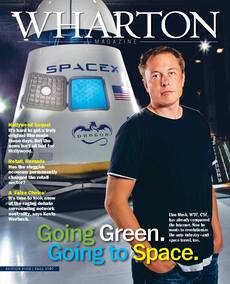(This is an abridged and slightly edited excerpt from Eric Lowitt’s new book, The Future of Value, which is now available. Based on extensive interviews with dozens of business leaders, the book tells the story of how certain companies—Sustainable Market Leaders—are embracing sustainability to create value for stakeholders.)
Sustainability’s impact on the competitive landscape is best tested through the lens of Michael Porter’s watershed Five Forces Model of Competition. Let’s examine changes in each of the five forces.
Suppliers
Sustainable Market Leaders place many new demands on already overburdened suppliers. The end result is that these buyers can dictate a large number of sustainability actions, or the supplier will lose the buyer’s business.
For example, Travelocity recently accepted Hilton Worldwide hotels its Green Hotel Directory, a move that sent many of Hilton’s rivals asking Alison Presley, manager of Travelocity’s Travel for Good program, to be included as well. She summed up her response as: “Find an auditor and then show us the proof of the pudding.”
Buyers
To understand their current state of power, we need to distinguish between institutional buyers and individual consumers.
For institutional buyers, they capture power from suppliers and vice versa. Gap Inc.’s selection of Monadnock Paper as a primary supplier sent its peers racing to step up their green certification efforts.
For individual consumers’ relationship to producers, the outcome is still unsettled. Consumers have yet to vote en masse, with their wallets, for sustainable goods. But there is potential for green-focused shoppers to wield their power to force companies to make socially conscious manufacturing methods the new “traditional” approach to value creation.
Substitutes
 In the business-to-business market, sustainable substitutes are gaining power. Monadnock’s FSC-certified commercial printing paper is an example of a product earning new revenue for its organization.
In the business-to-business market, sustainable substitutes are gaining power. Monadnock’s FSC-certified commercial printing paper is an example of a product earning new revenue for its organization.
In the individual consumer market, there have been a few notable successes. Toyota sold 2 million Prius cars between the first mass-produced hybrid’s introduction in 1997 and September 2010. But until consumers change their buying behavior by placing a greater emphasis on sustainability, these substitutes will struggle to gain market share.
Potential Entrants
 In both the consumer and business customer markets, many sustainability-conscious entrants are trying to capture market share. But the best measure of their success to date is not how much share they have captured but how many maneuvers incumbents have made in response to the new entrants’ efforts.
In both the consumer and business customer markets, many sustainability-conscious entrants are trying to capture market share. But the best measure of their success to date is not how much share they have captured but how many maneuvers incumbents have made in response to the new entrants’ efforts.
Consider Tesla, the Silicon Valley electric-vehicle startup, which has affected the automotive industry without gaining 1 percent of the market. Their mere presence, and the celebrity-like attention founder, Elon Musk, W’97, C’97, has received, has led car manufacturers such as Nissan and GM to allocate billions of dollars to their own electric-vehicle development efforts.
Industry Rivalry
Sustainable Market Leaders’ pursuit of sustainability ahead of their peers has changed the terrain of competition. Fifteen years ago, Barry Nalebuff and Adam Brandenburger coined the term co-opetition to describe “a revolutionary mind-set that combines competition and cooperation.” I believe that industry rivalry has morphed into a curious state of uneven co-opetition.
More progressive companies are finding that collaborating with strange bedfellows, including their competitors, is good for all involved.
On the flip side, competitive differentiation is a widespread motivator for Sustainable Market Leaders: Ninety percent of the companies I interviewed for this book described sustainability’s role within their organizations as some variant of: “Sustainability is core to our competitive strategies.”
How is your company using sustainability for competitive advantage?
























